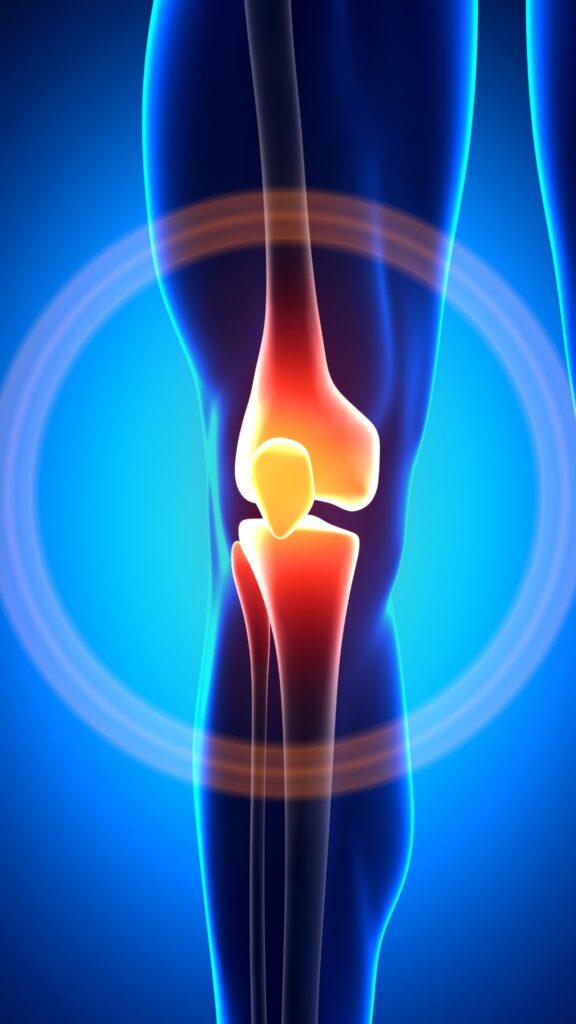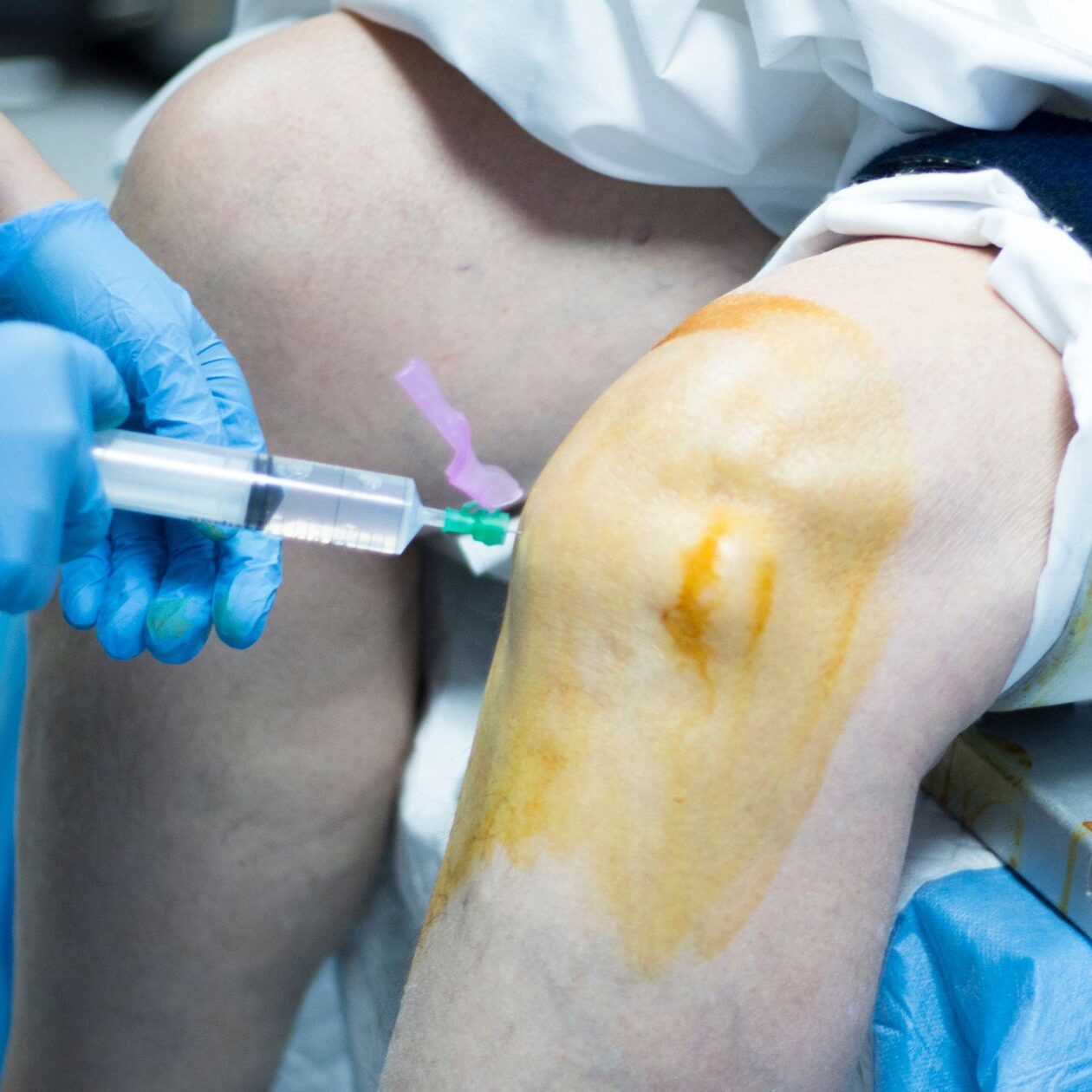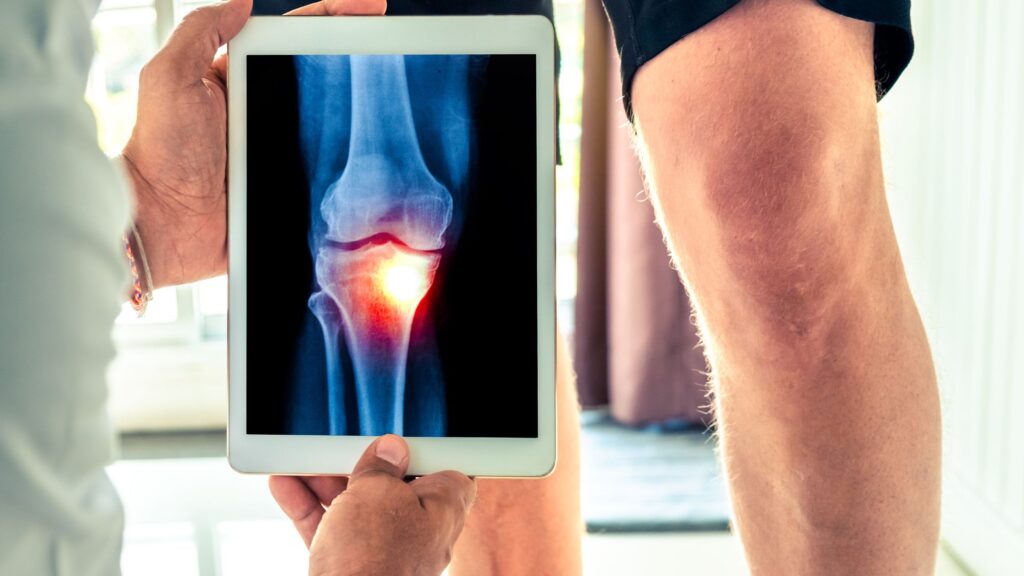Knee problems are a common issue, affecting people of all ages and backgrounds. In the UK, knee injuries and conditions are a frequent reason for doctor visits, especially among athletes and older adults. A wide range of knee problems can arise, from injuries like sprained ligaments and cartilage tears to chronic conditions such as arthritis. Understanding these conditions, how they are diagnosed, and the risks of leaving them untreated is crucial to ensuring long-term knee health.
Common Types of Knee Problems

- Sprained or Strained Ligaments
Ligament sprains and strains occur when the ligaments holding the knee bones together are overstretched or torn. The anterior cruciate ligament (ACL) and medial collateral ligament (MCL) are often affected, especially in sports that involve sudden stops or twists.
- Cartilage Tears
The meniscus, a piece of cartilage that cushions and stabilizes the knee, is vulnerable to tearing, especially during activities that involve twisting or impact.
- Tendonitis
Tendonitis is the inflammation of tendons around the knee, often due to repetitive motion or overuse. One of the most common types, patellar tendonitis (or “jumper’s knee”), affects athletes involved in jumping sports.
- Arthritis
Osteoarthritis (OA) is the most prevalent form of arthritis affecting the knee. The condition leads to the breakdown of cartilage, causing pain, swelling, and stiffness.
Diagnosis of Knee Problems
Diagnosing knee issues typically starts with a physical examination, where a doctor assesses pain, swelling, and knee stability. Depending on the suspected problem, they may recommend imaging tests, including:
- X-Rays – Effective for assessing bone fractures and osteoarthritis.
- MRI – Offers detailed images of soft tissues, making it ideal for diagnosing ligament injuries and cartilage damage.
- CT Scan – Useful for diagnosing complex bone injuries.
- Arthroscopy – A minimally invasive procedure that uses a small camera to view the inside of the knee, allowing for a close inspection of the joint and even treatment if necessary.
Risks of Untreated Knee Problems
Leaving knee issues untreated can lead to worsening symptoms and more severe conditions. For example, untreated ligament injuries may cause the knee to become unstable, potentially leading to additional damage to other knee structures, such as cartilage. Similarly, failing to manage tendonitis can lead to chronic pain and limited mobility, while untreated arthritis can cause permanent joint damage and disability over time.
It is very important to have an early diagnosis and treatment to avoid these long-term consequences. Delaying treatment can significantly impact one’s mobility, quality of life, and increase the need for more complex interventions, such as knee replacement surgery.
When dealing with knee conditions, a range of treatments are generally recommended before considering knee replacement surgery.
Treatment options, from non-invasive to minimally invasive
- Lifestyle Changes, Physical Therapy and Pain Management
Low-impact exercises, weight management, and appropriate pain medications are recommended to strengthen knee-supporting muscles, reduce joint pressure, and manage inflammation for those with knee issues. Studies show that each pound of weight loss can decrease knee joint load by about four pounds, while NSAIDs and acetaminophen offer pain relief.

- Injections for Pain Relief
Corticosteroid Injections
Providing temporary relief by reducing knee joint inflammation, corticosteroids typically last one to two months. However, repeated use may weaken cartilage.
Hyaluronic Acid Injections
These injections restore lubrication in the knee, enhancing mobility and reducing pain. They’re often more effective in the early stages of osteoarthritis.
Platelet-Rich Plasma (PRP) Injections
PRP uses a concentration of the patient’s platelets to potentially promote healing in the knee. Some studies suggest PRP may help reduce pain and improve function in knee osteoarthritis, although more research is needed to confirm its efficacy.
- Regenerative Treatments
Stem Cell Therapy – Stem cells derived from sources like bone marrow or adipose (fat) tissue are used to aid in tissue repair and regeneration in the knee. Research is ongoing, but early results suggest potential benefits for pain reduction and cartilage repair. - Orthopedic Supports and Devices
Knee Braces
Braces can help stabilize the knee and reduce pain, particularly in cases of arthritis. Unloader braces are designed to relieve pressure on either side of the knee, providing targeted support.
Orthotic Insoles
Custom insoles help align the leg, reducing knee joint stress, especially in patients with mild to moderate osteoarthritis.
- Minimally Invasive Procedures
Arthroscopic Surgery – A minimally invasive procedure often used for issues like meniscal tears and cartilage damage. While not a replacement for full knee replacement, arthroscopy can relieve pain and improve joint function in some cases.

Experience pain-free mobility with innovative, minimally invasive knee treatments in Austria! Skip the lengthy waits in the UK and access advanced care from top specialists to quickly regain strength and movement. Discover how Austria’s specialized clinics can help you return to an active, pain-free life with treatments like arthroscopy, PRP therapy, and more.
Contact us today to learn how we make quality healthcare accessible, affordable, and prompt.

